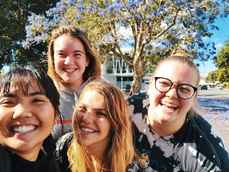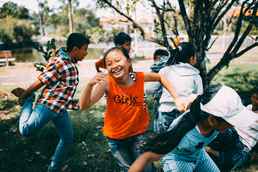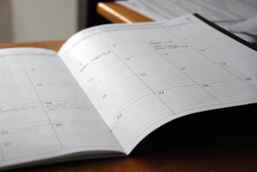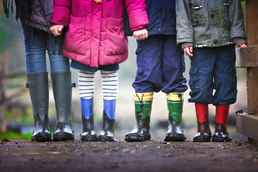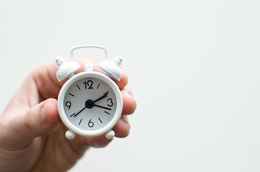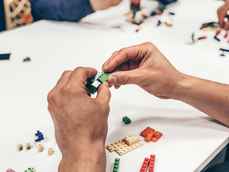Community Child and Youth Well-being Survey Toolkit
This toolkit provides municipalities and governing bodies with the tools and knowledge they need to successfully implement the Community Child and Youth Well-being Survey.
Download the Community Child and Youth Well-being Survey Toolkit as a PDF or go through the modules below.
Module 1: Introduction
Download Module 1: Introduction as a PDF.
Module 2: The Survey Process
Download Module 2: The Survey Process as a PDF.
Module 3: Planning the Survey
It is tempting to rush the planning stage when you are eager to make progress, but “going slow to go far” is advice well worth following. The first stage of the data cycle will likely take the longest. Depending on how much pre-existing structure is in place, this phase of the project could take months or even longer.
Download Module 3: Planning the Survey as a PDF.
See Appendix for more information on planning the survey.
Module 4: Collecting the Data
A key stage of the planning process is deciding how to communicate the invitation to participate in the survey. A number of options may be employed simultaneously. Different tactics may be more positive for young people, may reach some groups better than others, and may lead to smaller or larger total responses. Getting this right can mean the difference between a robust data set that reflects your community’s diversity versus an interesting glimpse into the experiences of a more restricted sample. The tactics outlined in this section of the toolkit can be implemented during the data collection stage but should be prepared before the survey is ready to go live. Treating this stage of the data cycle like a campaign, with targets for survey completion as well as for promotional activities (e.g., number of retweets, number of presentations delivered) can help you achieve the ultimate goal of reaching the number of youth respondents you’re aiming for.
Download Module 4: Collecting the Data as a PDF.
See Appendix for more information on how to collect the data.
Module 5: Understanding the Data
When you come to the end of your active survey period, there will be a gap in time before you have data while researchers clean the raw data of any errors, suppress any data that might violate privacy protections, assess the reliability and validity of the data, and compile it for viewing. This process takes anywhere from one to several months.
It is important that all your stakeholders know this is a normal part of the process so they do not sense a decline in momentum. One big communication to everyone when the survey closes can serve as a thank you, celebration of success so far and preview of next steps. Depending on how long it will be before you plan to release the results, consider scheduling some touchpoints for communication in the intervening period. These could include sharing third-party articles or information related to child and youth well-being, along with reminders and progress updates on next steps in the process. This period can also be used to finalize a Data Sharing Agreement and the format of the raw statistical database for data storage and sharing (see toolkit section, Data security, privacy and sharing).
It is also a good time to prepare for the next stages of the data cycle: how to help people understand and act on the data. Meaning-making includes questions such as “what is happening here? Why? What can we learn from this to make life better”?. This stage of the data cycle can include designing and scheduling events for sense-making and action planning; deciding report formats and design; and preparing communications. Until you have the preliminary results, this step can focus on confirming the processes, activities, roles, audiences and materials you want to prepare; identifying a look and feel for the materials; and ensuring that your writers, graphic designers, communications experts, facilitators, event spaces and interpreters are queued up and ready to go when the data are available. Allow sufficient time for any delays in data production.
Download Module 5: Understanding the Data as a PDF.
See Appendix for more information about the data cleaning and preparation process.
Module 6: Acting on the Data
This can be the hardest part of the data cycle to implement – and the most critical to the project’s overall success. The data gathering phase has a clear beginning and end. The analysis phase is trickier since it could continue indefinitely as the data progressively reveals more questions.
At some point though, the focus must shift to taking action. This has been the promise all along, and failing to deliver will make it very difficult to regain the trust of the same stakeholders. When undertaking a research project, there is always a risk that the data will sit unused. Considering that data provided by young people is a resource that they provide with high trust and expectations and it draws on sometimes challenging life experiences, their data should never be collected without a commitment to report back and use the data. According to the UK What Works for Well-being Centre, there is a gap of seventeen years on average between generating evidence and turning it into action. That gap is equivalent to one generation. With survey data and resolve, that gap can be much shorter. With forethought and planning, the survey can be a catalyst that punches well above its weight as a community builder, innovation accelerator and benchmark for ongoing progress.
With a goal as ambitious as improving the quality of life of children and youth in your community, you are unlikely to make progress without focused and concerted effort. Making change necessarily means disrupting the way things are done now. Well-intended individuals do not intentionally get in the way of progress, but overcoming resistance from people and systems to break patterns and potentially change their priorities takes effort. Helping people see themselves as having the potential to create positive change, paired with the evidence base provided by the survey and collaborative sense-making, should lead to action.
The Child and Youth Planning Table of Waterloo Region asked young people, “What needs to happen next” in more than 20 sense-making sessions, and created a “Data in Action” website listing actions for each well-being dimension of the survey and keeping track of progress. Young people created community art to reflect each of the nine well-being dimensions.
Download Module 6: Acting on the Data as a PDF.
See Appendix for more information about acting on the data.



